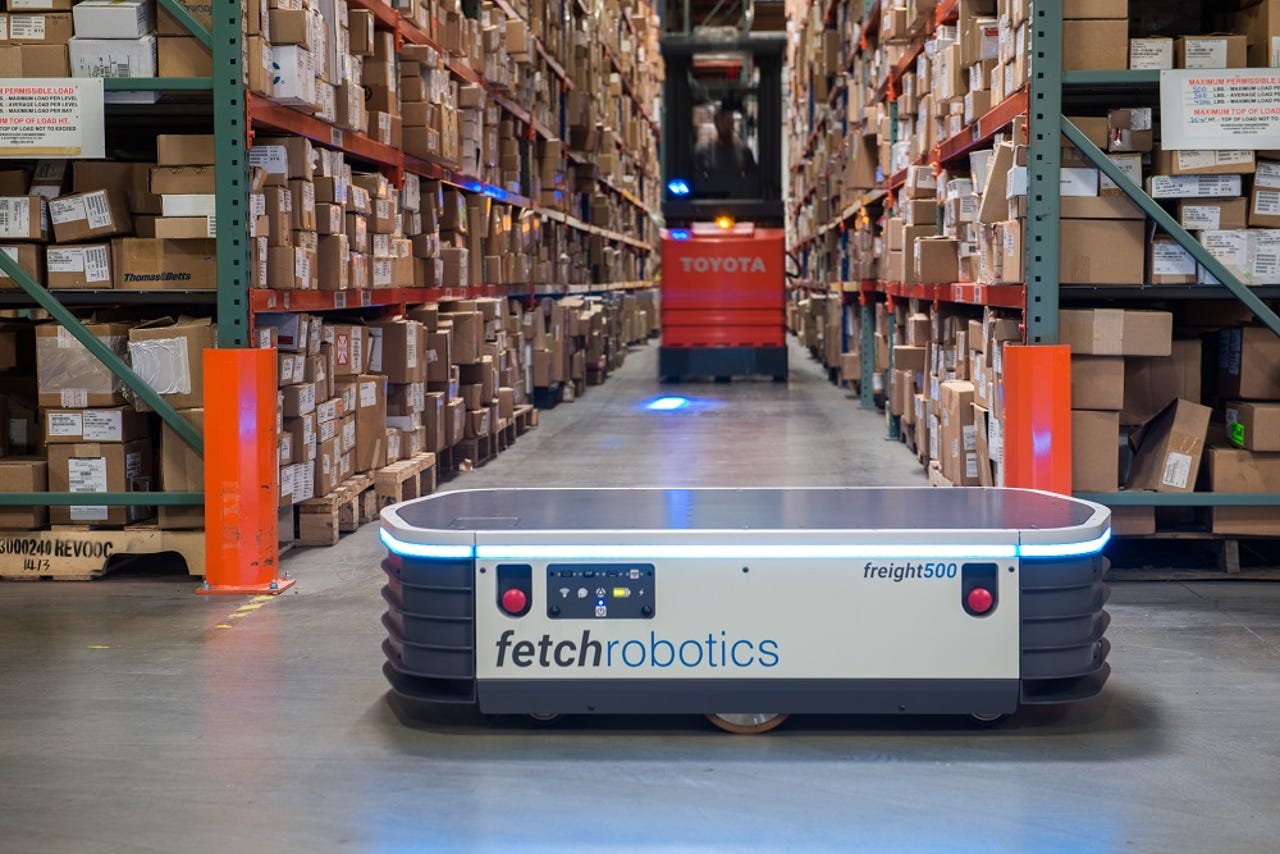Fetch Robotics unveils small but mighty autonomous mobile robot


(Image: Fetch Robotics)
"Fetch is actually a software company that just happens to build robots," says Fetch Robotics CEO Melonee Wise. We spoke with Wise to learn more about two new robots that Fetch has added to its line of Freight robots.
Just like the first Freight, the new Freight500 and Freight1500 are autonomous mobile robots (AMRs) that use mapping algorithms to navigate without the help of humans or infrastructure changes. They carry heavy loads in manufacturing and warehouse environments. Fetch's robots have a low profile -- just 14 inches tall -- but while the original version could only carry 220-pound loads, the new robots can support as much as 3,300 pounds.
Wise started her robotics career at robotics incubator Willow Garage, where she was a core developer for ROS (Robot Operating System), the software behind nearly all modern robots. Now, she focuses on commercializing robotics. "I think that one of the things that we as roboticists do poorly is bring our ideas out of the lab and into reality," she says, "So I'm really focused on making a product that people will use in the real world."
(Image: Fetch Robotics)
Fetch's original Freight AMR is still a nice solution for moving smaller items around, but now the company is expanding its line based on feedback from the real world. "What we heard from customers is that they really want to move things that are different sizes: pieces, cases, and pallets," Wise says.
Robotics
Some facilities don't have room for large pallet-moving robots, but they still need help moving heavy loads. In this case, the Freight500, which can move 1,100-pound payloads, is the right fit. Other larger manufacturing plants want a whole fleet of different-sized robots to handle various tasks.
"We try to strike a balance between the extra payload capacity and the size of the robot because these robots are rather large," Wise explains.
The robots help transport items from one part of the facility to the other so that workers can save their time and energy for other tasks. Freight has also been used along with Trax computer vision for inventory tracking in retail stores.
"We're working with one Fortune 500 company that already has Freights deployed, and they're gearing up to do a pilot with us for the two new robots," Wise says. She adds, "They want to be able to have robots in all levels of their warehouses and retail stores so that they can improve delivery times from order to box."
There are other robotics companies making AMRs that can move heavy items around, most notably Clearpath Robotics, which raised $30 million in October for its Otto line of self-driving vehicles for materials transport. But Wise says that Fetch's software gives her company's robots a competitive advantage.
All of the Freight robots are integrated with Fetchcore, a cloud-based software for managing fleets of robots. Operators use the software to create and schedule workflows by adding stations, preferred routes, speed maps, and keep-out zones. This helps customers put their new robots to work in just a few days.
"We basically show up with the robots, attach them to the internet, and then we're up and running," Wise says.
VIDEO: Trump may bring jobs back to the US, but robots will get them